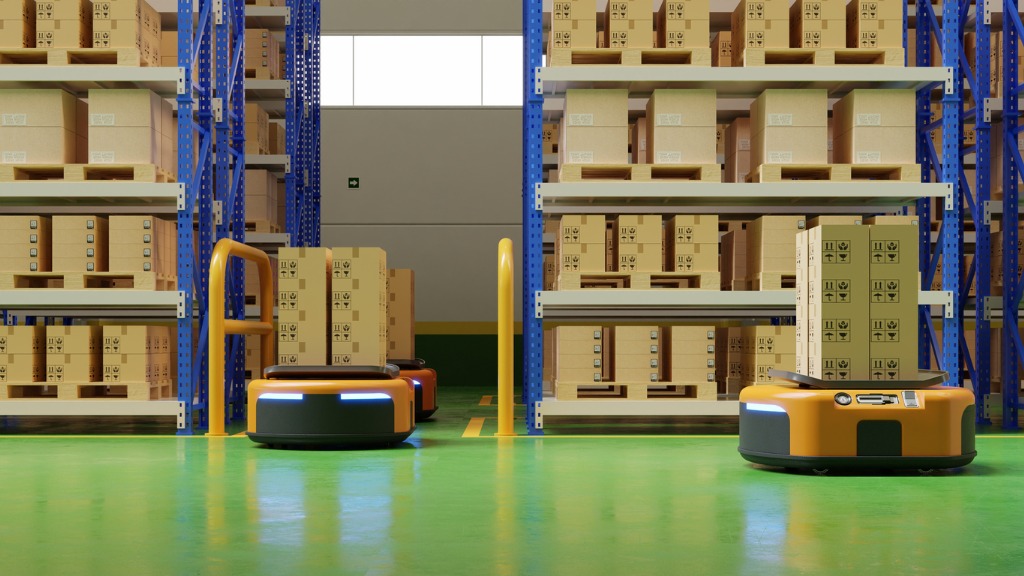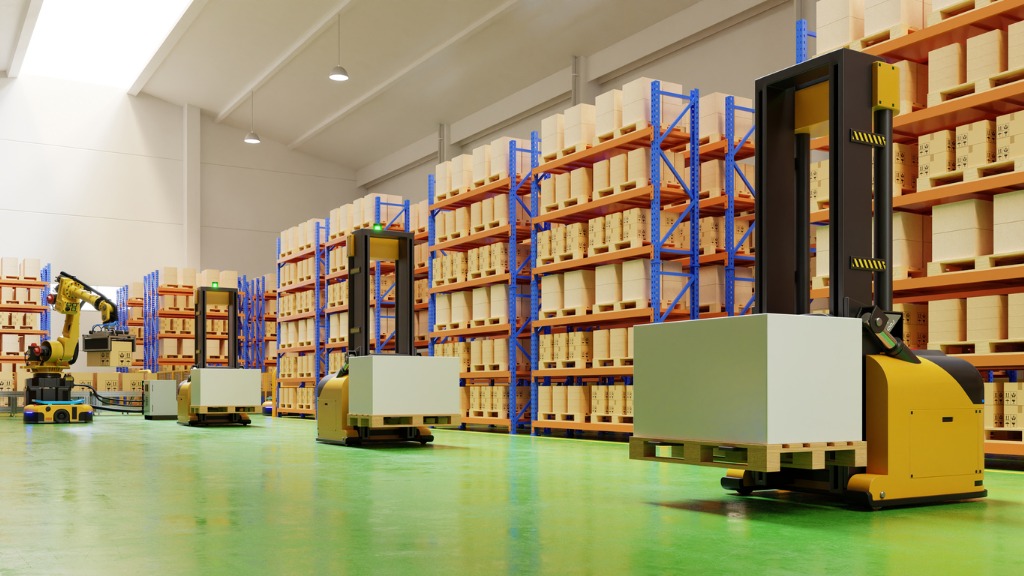With increased access to retailers causing unexpected spikes in warehouse demand, many companies have turned to robotics solutions as a way to adapt to new business models.
As industries have been forced to look for alternative solutions due to increased labor costs and a shortage of qualified workers, AMRs or autonomous mobile robots have proven to be beneficial in filling in these gaps.
Although certain types of warehouse robotic technology have been around for quite some time, many warehouse managers are curious about how AMRs can be beneficial to their business.
In this article, we will take a closer look at what they are, what they do, and how they are revolutionizing operations and streamlining the picking process.
What are AMRs and what do they do?
In virtually any scenario where workers are used, AMRs are an easy, reliable, and cost-effective way for companies to automate material handling and in-house transportation activities.
Because they are equipped with a variety of sophisticated sensors that allow them to interpret their surroundings, AMRs can move through a variety of fixed and variable obstacles and surroundings without the need for direct supervision or to follow a predetermined path.
Similar to automated guided vehicles (AGVs), AMRs are capable of recognizing and learning from their surroundings, as well as making decisions on their own. This allows them to carry out specific tasks with little to no human interaction.
However, while AGVs must adhere to much stricter, predetermined routes, AMRs find the most efficient route to complete a given task and are designed to work collaboratively with operators during warehouse operations.
These sophisticated technologies are integrated with management systems in warehouses and distribution centers, giving the AMRs more flexibility to create their own routes between locations within a warehouse or facility.
The result is an autonomous robot that is very capable of collaborating with humans in dynamic environments to improve the efficiency and productivity of processes and workflows.
The various types of AMRs
Autonomous Mobile Robots are divided into three main categories.
- AMRs used in the picking area
- AMRs used for flexible sortation
- AMRs that increase inventory visibility
Let’s dive into the various types of AMRs to help you better understand which type will be most effective at improving your warehouse automation.
AMRs used in the picking area
AMRs come in various shapes and sizes, all of which are designed to cut down on picking time. This is accomplished by bringing a specific product to the picker, which reduces the picker’s overall travel time.
For example, an AMR takes a bin to a shelving location within a zone where a picker assigned to that zone can then choose inventory from nearby locations to complete the order.
When the order is finished, the AMR collects the order and transports it to the next zone for further picking or delivers it to a packing station for final shipping.
This process is repeated multiple times with multiple AMRs operating and transporting to multiple picking stations. As a result, a worker can spend more time picking orders and less time walking around and looking for them.
AMRs used for flexible sortation
Sorting can also benefit from the use of AMRs. For instance, AMRs can bring an empty bin or pallet to a workstation where a worker is located. Then, after the product’s barcode is read, the AMR takes the product to its destination and drops it off.
When the order is finished, either an operator or the AMR takes it to shipping, another AMR brings in an empty container, and the process repeats itself.
AMRs that increase inventory visibility
Modern order fulfillment relies on accurate, clear inventory visibility, which includes knowing exactly where a product is located in a distribution center, warehouse, and overall supply chain.
Inventory movement and reconciliation, on the other hand, can be a time-consuming and challenging process to coordinate for large and complex warehouse operations.
A fleet of AMRs enables warehouse automation, reducing the time and cost required to maintain maximum productivity and order accuracy. Each task is directed by the operating system, including built-in checking processes to detect inventory irregularities and anomalies.
How can AMRs improve warehouse operations?
There are five major ways that AMRs can improve your warehouse operations.
- close labor gaps
- improve warehouse safety
- improve accuracy and efficiency
- support digital efforts
- don’t disrupt daily operations
Close labor gaps
The global market for warehousing space is experiencing healthy growth as the global population is increasing and strong economies in major markets drive up demand for goods and services.
The use of AMRs allows warehouse operations to scale on-demand, redeploy human workers to higher-value tasks, and reduce the risk of relying on seasonal labor.
This allows human workers to focus on other high-value tasks while AMRs move products between workers and stations.
Improve warehouse safety
AMRs exponentially boost productivity in order fulfillment operations. AMRs can also help warehouse associates pick items for multiple orders, reduce the number of trips, and cut down on overall warehouse travel time and physical and mental fatigue.
Improves accuracy and efficiency
With AMRs, the human error component of workplace accidents is eliminated. Instead, using advanced vision systems and sensors to sense their surroundings and react in real-time, these robots can adhere to strict operating standards to ensure the utmost accuracy and efficiency.
Support digital efforts
Many, if not all, businesses are undergoing some form of digital transformation or modernization.
Warehouse managers can quickly implement and use AMRs to collect data about material movement and inventory utilization to help align the physical execution of tasks with the company’s digital footprint.
Don’t disrupt daily operations
Lastly, because autonomous mobile robots are a type of flexible automation that is not constrained by a warehouse’s layout, they are simple to install and easy to deploy.
This is especially important for smaller warehouses that cannot accommodate disruptions in daily operations but lack the financial resources to invest in new facilities or full-fledged automation.
State-of-the-art shelving solutions from BILT Industries
Whether or not AMRs are appropriate for your warehouse is dependent on your company’s specific needs.
However, there’s no doubt that autonomy is the future for many businesses, which means it’s critical that you have the knowledge, experience, and expertise to better assist you in analyzing your daily operations and staying better prepared for the future.
At BILT Industries, our mission is to help businesses of all kinds maintain high-quality standards in the workplace. We do this by developing high-quality shelving solutions that are designed to be compatible with AMRs and allow them to work as efficiently as possible.
Watch this video to learn more about how BILT Industries’s industrial shelving systems are designed to work hand-in-hand with AMR technology.
For inquiries about our industrial shelving solutions, email us at sales@biltindustries.com or call us at (913) 685-7400 to speak with a dedicated customer service representative about your business’s needs.


